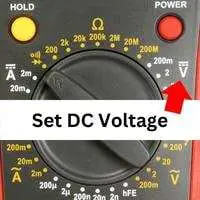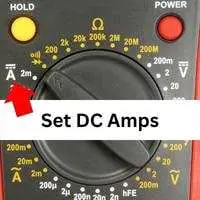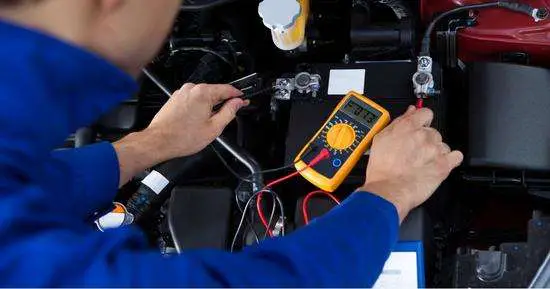It’s advised to check the battery voltage and amperage to determine if you need to replace it or not. A multimeter is the best tool to evaluate a battery’s performance. In this post, you’ll learn how to test a battery with a multimeter by measuring its voltage and amperage.
A battery should be tested quickly to keep the appliances moderately functioning. Modern cars can experience “parasitic Loss” when an electrical source drains the battery, even while the engine is turned off.
Let’s continue testing:
Table of Contents
ToggleHow to test a car battery with a multimeter
To test a car battery
- Set your multimeter to DC voltage above the battery’s voltage.
- Connect the red probe to the positive terminal and the black probe to the negative terminal of your battery.
- Your multimeter should read the ideal battery voltage range if your battery is fine.
- Also, measure your battery’s amperage (A⎓) and compare it with the ideal value.
Follow the step-by-step guide:
Step 1: Remove the battery from the car
First, locate your vehicle’s battery and disconnect it from the wires. Refer to the owner’s manual for details.
Remove corrosion from the battery terminals for accurate readings.
The positive terminal will have a + sign, and the negative terminal will have a -ve sign.
Wear gloves to prevent the harmful effects of battery acid.
Step 2: Set up your multimeter 
Insert the black probe into the COM-labeled port and the red probe into the VmAΩ port.
Set your multimeter to DC Voltage with a ‘V⎓‘ sign. Select a higher range above the battery. For example, if you are testing a 12V battery, set your multimeter to 20 V.
Step 3: Test the battery voltage
Turn on the multimeter. Connect the red probe of the multimeter to the battery’s positive terminal and the black probe to the battery’s negative terminal.
If your battery is fine multimeter will read the maximum voltage when the battery is charged.
For example, if you are testing a 12V battery with a multimeter, it should’ve around 12.6 volts. However, if the multimeter reads 12V or less, your battery is about to die. If the multimeter reads 10V or less, then your battery is dead.
However, suppose the multimeter reads negative voltage. It means that you have attached probes to the battery in opposite directions, such as the red probe to the negative terminal and the black probe to the positive terminal.
How to test battery amps with a multimeter
Set your multimeter to DC amps to check battery amps because the battery supplies direct current.
While checking amperage less than an amp, insert the red probe in the VmAΩ port; otherwise, to check 1-10 amps, insert the red probe in the 10A labeled port.
Check the battery amps and set your multimeter above that range. Such as, while measuring a 5 Amp battery, set the 10 amp range.
Now connect the black probe to the negative battery terminal and the red probe to the positive battery terminal.
Compare the ampere reading on the multimeter with the ideal amperage of the battery. You can find the battery’s amperage on the body or manufacturer manual.
Frequently Asked Questions
- How to test an AA battery with a multimeter?
To test an AA battery, connect it to a circuit such as with a bulb. Now connect the red probe to the positive terminal and the black probe to the negative terminal of the AA battery.
If the tested battery is good, the multimeter will read exactly or slightly lower than the battery’s voltage. For example, if your AA battery is 1.5V, the multimeter should read around 1.5 or 1.49V.
- How to test a 12-volt battery without a multimer?
To check a car battery’s (12V) health without a multimeter:
- Turn on your vehicle’s lights for a few minutes before starting the engine.
- Turn on the engine, and if the lights get quite dim, it’s a sign that the battery is either not fully charged or dying.
- Fully charge the battery and see if the lights are still dim.
- What are the signs of a bad battery?
A bad battery can show these signs:
- Physical problems like heating, leaking and bulging
- Battery drains too quickly and cannot hold a charge
- The voltage across the battery’s terminals is too low compared to the label’s voltage.
- If your vehicle’s essential functions stop working eventually, it could be a faulty battery.
Conclusion
To test a car battery, first of all, inspect the battery for any damage or corrosion. Then check the voltage and amperage of the battery with a multimeter. Compare the multimeter readings with the ideal voltage and amps of the battery. That’s all.
Hopefully, this post will help you evaluate your battery’s health. Share your opinions and queries in the comments.
Related Guides:




